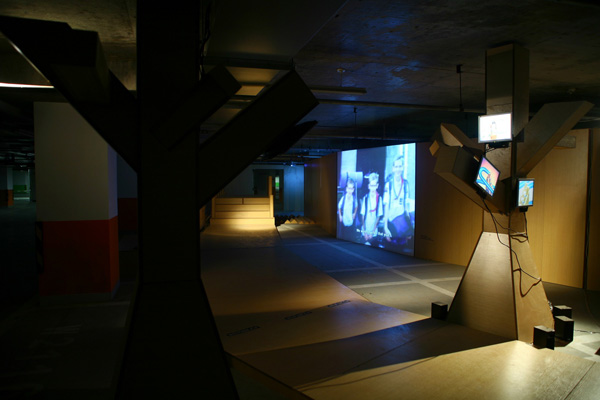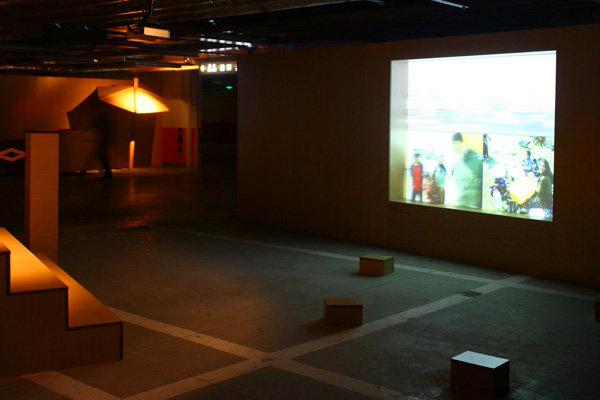A Theory-Fiction between the Real and the Possible
June 2007
Soho Shangdu Underground Parking Lot | Opening exhibition of Borderline Moving Images 2007
Beijing, CN
curator :: Beatrice LEANZA
exhibition design :: LI Naihan
participating artists :: Fikret ATAY, Johanna BILLING, Candice BREITZ, Mircea CANTOR, Calin DAN, Claire FONTAINE, GAO Shiqiang (高世强), Clarisse HAHN, Teresa HUBBARD & Alexander BIRCHLER, Jesper JUST, Mathieu LAURETTE, Melik OHANIAN, OU Ning & CAO Fei (欧宁 & 曹斐), SHI Qing (石青), Ulla Von BRANDEMBURG, WU Wenguang (吴文光), ZHANG Peili (张培力).
A constructed story-telling portrayed by the experiments of 17 international artists, Seduction is a theory-fiction inspired by the homonymous book by French philosopher Jean Baudrillard, featuring diverse video installations, including documentary, experimental video, and footage appropriated from personal and public archival material, CCTVs, mass media, pop culture video-clips, cinema repertory, etc.
“On the backdrop of modernization and the inspirational economic leverage incited by the countdown to the Olympics, the changing relationship between politics and culture articulates within a process of experimentation which interrogates locality and its historicity against, on a side, the products of global consumerist culture, and on the other, the convergence of new models of spatial thinking and occupation, popular culture, social ‘neo-neo-tribalism’, corporate branding, viral marketing and hybrid libidinal economies. The perpetual nature of this predominantly visual production giving rise to new urban imaginaries speaks to the paradigmatic quality of fluid social networks, where communication is situational, metaphorically consumed in the digital time of internet and experienced in the superficial flux of moving images. Indeed the synthesis of global connectivity is not only challenging our sense of space, but also that of human presence within; while displacing the time of history in a one-dimensional media flow, it furthers brings into questions that of its immanent possibilities and “invisible” modes of existence. It is thus in the spatial convergence of our mental vocabulary/memory, one of compound narrativity and filmic character, and the digital tempo of contemporary hyper-production that opens up the measure for art to forge critical distance and innovative models of counter-representation.”













